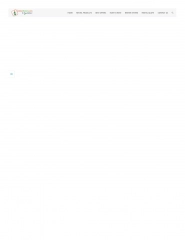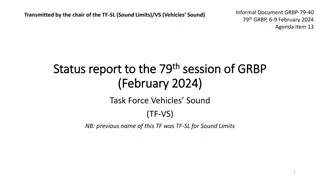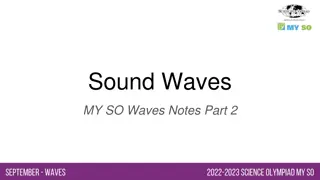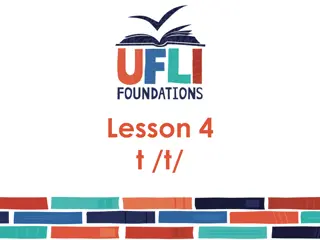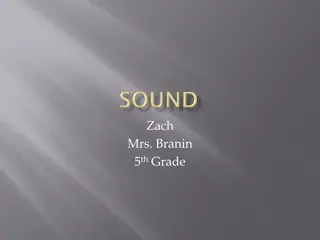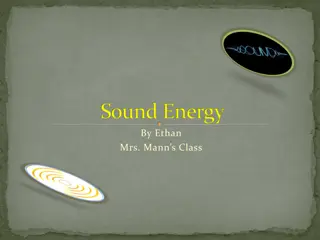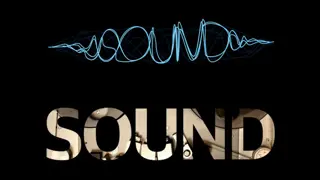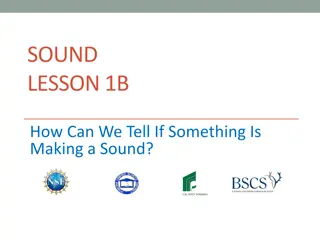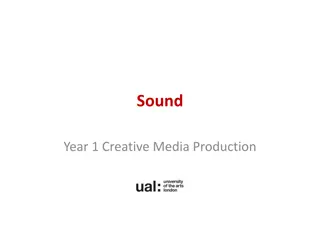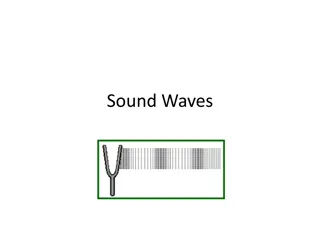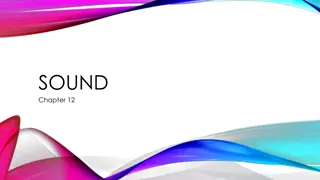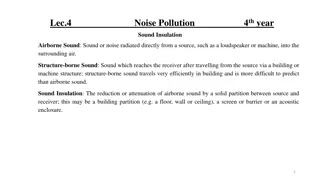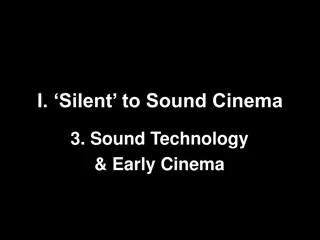
Best Materials for Muffling Sound Experiment
Explore the best materials for muffling sound through an exciting experiment conducted by Professor Big-Hair and Professor Bee-Hive. Discover the methodology, fair test principles, and predicted materials for sound muffling. Uncover results using a systematic approach with various materials like newspaper, bubble wrap, fabric, cardboard boxes, and coats.
Download Presentation

Please find below an Image/Link to download the presentation.
The content on the website is provided AS IS for your information and personal use only. It may not be sold, licensed, or shared on other websites without obtaining consent from the author. If you encounter any issues during the download, it is possible that the publisher has removed the file from their server.
You are allowed to download the files provided on this website for personal or commercial use, subject to the condition that they are used lawfully. All files are the property of their respective owners.
The content on the website is provided AS IS for your information and personal use only. It may not be sold, licensed, or shared on other websites without obtaining consent from the author.
E N D
Presentation Transcript
Which material is best for muffling sound? Miss M Gheewala
Professor Big-Hair and Professor Bee-Hive have a problem. They can t do any work, because their alarm clock is constantly ringing and the off switch is broken. Professor Big-hair thinks if they wrap it in a sheet, they can muffle the sound so they won t be able to hear it. Professor Beehive thinks they should do an experiment with different materials, to see which one will muffle the sound best. She says they should wrap the alarm clock in each of the materials, and see if they can still hear it ringing.
Which material do you think will be good at muffling the sound? Fill in the gaps in these sentences about the experiment. Choose the right words from the boxes at the bottom. The professors should wrap the _______________ in each ___________ they are testing. They should make sure they use ________________ number of layers of each material, and they leave ______________ gaps when they wrap up the alarm clock. no material the same different alarm clock notebook a tiny bubble wrap
When you do an experiment, its important to make sure that it s a fair test. Doing a fair test means doing an experiment where you change only _______________. To test which material muffles sound best, you must only change the _______________ each time you have to make sure you use the ______________ number of layers for each wrapping, that you ve used the same __________________________ to muffle each time, and you measure how ______________ it is in the same way each time. If you changed the material and changed the number of layers as well, you __________ know if the result was because of the material or the number of layer. Sound Would Same two things weather material different your socks One thing Wouldn t loud hear always
Which materials are we going to use? Materials we are going to use in this investigation are: Newspaper Bubble wrap Fabric Cardboard boxes Coats Which material do you predict to be the best at muffling sound?
Method What are you going to do? How are you going to do it? What will you need to keep the same or change?
Results In your groups use the following table to investigate if your material is the best at muffling sound. How good it was at muffling sound Material Layers
Class results Material Layers used How good it was at muffling sound Newspaper Bubble wrap Fabric Cardboard boxes Coats
Conclusion Which material was best at muffling sound? Remember the quieter it made the sound, the better it was at muffling sound. How can you compare the different materials?
Can you write a letter to Professor Big-Hair and Professor Beehive to explain your findings from your investigation. Explain in your letter what you did and how you reached the final solution. Ensure you give the Professors advice on fair testing and why this is important.

